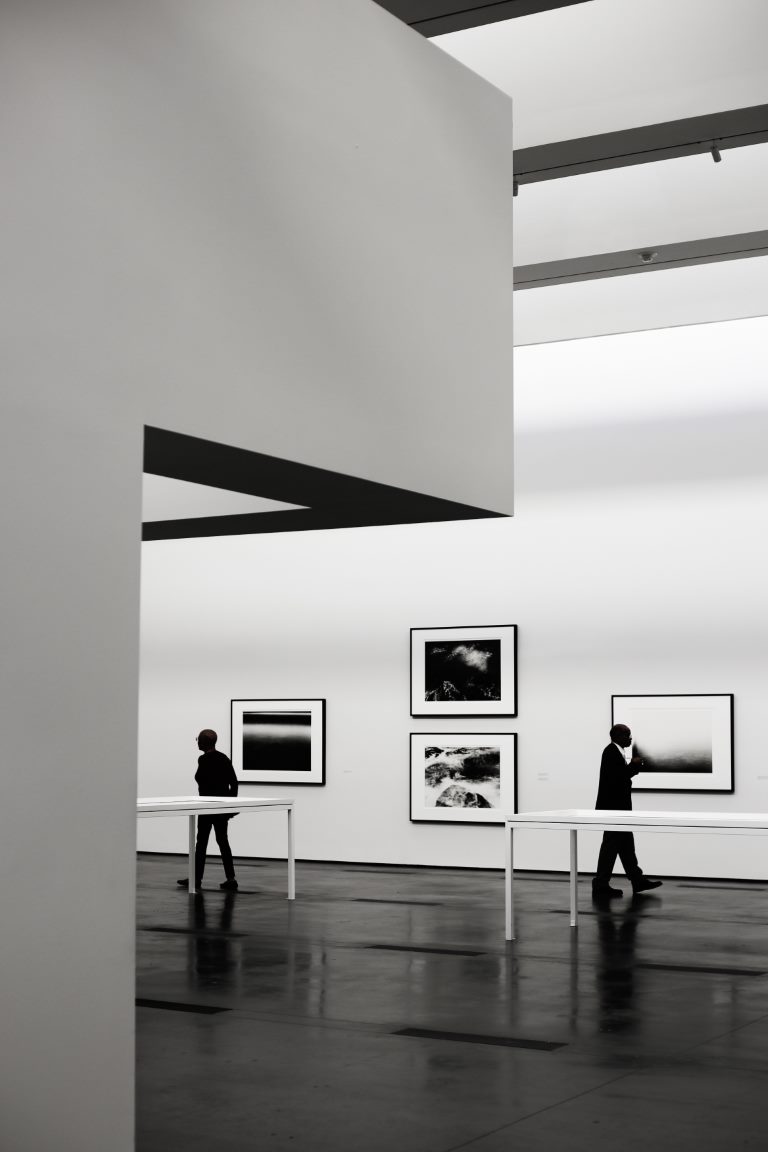How to Plan Your Amphibious Sightseeing Tour in Lisbon
Lisbon, the vibrant capital city of Portugal, is a beautiful combination of history, culture, and modernity. It is a place that you must explore with an open heart and mind, and what better way to explore it than an amphibious sightseeing tour? This is a fun-filled activity designed to delight both adults and kids alike, and it offers you a view of the best of land and sea. In this blog post, we will guide you on how to plan your amphibious sightseeing tour in Lisbon.Overview of the Tour
The amphibious sightseeing tour covers top Lisbon attractions such as Commerce Square and Avenida da Liberdade, where you can see stunning architecture and urban life. Your tour bus will then transform into a boat, and you will plunge into the Tagus River, where you’ll get to see the beautiful Belem Tower and the Monument to the Discoveries from your unique sea-level perspective. The tour offers you a chance to explore the city’s history, culture, and stunning natural charms all at once.What’s Included?
The tour includes live on-board commentary by an experienced and knowledgeable guide who will provide you with fascinating insights about the Lisbon city and its history. You can also enjoy food and drinks on board while enjoying the beautiful views of the city. Souvenir photos are available for purchase, so you can always cherish the memories of this fun-filled activity.Meeting and Pickup
The meeting point for the tour is Hippotrip, Doca de Santo Amaro Edifício Hippotrip 1350-353 Lisbon Portugal. The departure point is located at Doca de Santo Amaro in Alcantara, which is the marina situated directly below the big red “25 de Abril” bridge. You can check-in at the meeting point at least 15 minutes before the departure time. The tour offers various departure times throughout the day, so you can choose the one that suits you the best.How to Book Your Tour
To book the amphibious sightseeing tour in Lisbon, you can visit this link: book the tour here. This will take you to a page where you can select your preferred date and time, and make the payment. Once you have booked the tour, you will receive a confirmation email with all the necessary details.What to Keep in Mind
Here are a few things to keep in mind while planning your amphibious sightseeing tour in Lisbon:- Wear comfortable clothing and shoes as you will be travelling on both land and sea
- Carry sunscreen and a hat to protect against the sun
- Be respectful towards the guide, the city, and other guests on the tour
- You can carry a camera to capture the beautiful sights around you
- Carry sufficient cash or credit/debit card for any additional expenses you may incur during the tour
Book Your Tour Now
An amphibious sightseeing tour in Lisbon is a unique and exciting way to explore the city. It offers a perfect combination of land and sea exploration, making it a fun-filled activity for all ages. With this guide, you can now easily plan your tour and make the most of your time in beautiful Lisbon. Don’t forget to book your tour in advance to avoid any last-minute hassle, and get ready for an unforgettable experience.
Frequently Asked Questions About Lisbon
Lisbon, the capital of Portugal, is a vibrant city with rich historical and cultural heritage, scenic neighborhoods, delicious cuisine, and warm weather. Whether you are planning to visit Lisbon for a few days or for an extended period, you might have some questions about the city. In this FAQ guide, we will answer some of the most commonly asked questions about Lisbon.1. When is the best time to visit Lisbon?
The best time to visit Lisbon is from March to May or from September to November. During these months, the weather is mild, the crowds are smaller, and the prices are cheaper. If you prefer warmer weather and more daylight, you may want to visit in the summer months (June to August). However, keep in mind that the city can get crowded and hot, with temperatures that can reach up to 35°C (95°F). The winter months (December to February) are cooler and wetter, but also quieter and cheaper.2. How do I get around Lisbon?
Lisbon has an extensive public transportation network that includes buses, trams, metro, and trains. The metro is the fastest and most convenient way to get around the city, with four lines that cover most of the main areas. The trams are also a popular and scenic way to explore Lisbon, especially the historic Tram 28 that winds through the narrow streets of Alfama and Graça districts. Buses are slower but cover more areas, while trains connect Lisbon with the surrounding regions and cities. Taxis and ride-hailing services are also available.3. What are the must-see attractions in Lisbon?
Lisbon has many must-see attractions that showcase its history, culture, and natural beauty. Some of the top attractions include: – Belem Tower: a medieval tower that symbolizes Lisbon’s maritime heritage and is a UNESCO World Heritage Site. – Jeronimos Monastery: a magnificent monastery with intricate architecture and decoration that represents the golden age of Portugal. – Castle of Sao Jorge: a historic castle that offers panoramic views of the city and the Tagus River. – Alfama: a charming and picturesque district with narrow streets, colorful houses, and traditional Fado music. – Chiado: a trendy and elegant district with cafes, boutiques, and museums. – Lisbon Oceanarium: a world-class aquarium with marine life from different oceans. – Sintra: a nearby town with fairytale palaces, parks, and gardens.4. What is the currency in Lisbon and do I need to exchange money?
The currency in Lisbon (and Portugal) is the Euro (EUR). You can exchange money at banks, exchange offices, or ATMs, which are widely available in the city. Most shops, restaurants, and hotels accept major credit cards, but it’s always good to have some cash for small transactions or places that don’t accept cards.5. What is the food and drink scene in Lisbon like?
Lisbon has a vibrant and diverse food scene that reflects its history and geography. Some of the typical dishes and drinks in Lisbon include: – Bacalhau: salt cod that is prepared in many different ways and is considered the national dish of Portugal. – Pasteis de Nata: custard tarts that are synonymous with Lisbon and can be found in many bakeries and cafes. – Seafood: Lisbon’s location near the Atlantic Ocean means that there is an abundance of fresh and delicious seafood, including grilled sardines, octopus, and prawns. – Wine: Portugal is known for its excellent wines, especially the fortified wine Porto and the red wine Douro. – Ginjinha: a sweet and sour cherry liqueur that is a popular digestif in Lisbon. There are also many restaurants, cafes, and bars that offer international cuisine and fusion dishes, as well as craft beer, cocktails, and other beverages.6. What are the customs and etiquette in Lisbon?
Lisbon is a friendly and welcoming city, and its people value politeness, hospitality, and personal relationships. Some customs and etiquette tips to keep in mind when visiting Lisbon include: – Greet people with a handshake or a kiss on both cheeks (air kisses). – Use polite titles and last names unless invited to use first names. – Dress modestly and conservatively, especially when visiting religious sites. – Leave a tip of 5-10% in restaurants, cafes, and taxis. – Be patient and flexible, as things can move at a slower pace in Portugal. – Learn some basic phrases in Portuguese, as it shows respect and helps you interact with locals.7. What is the nightlife like in Lisbon?
Lisbon has a lively and diverse nightlife scene that caters to different tastes and styles. Some of the popular areas for night-time entertainment include: – Bairro Alto: a historic district with narrow streets, old buildings, and many bars and clubs that stay open until late at night. – Cais do Sodré: a waterfront area that has undergone a revitalization and now offers trendy bars, restaurants, and clubs that attract a younger crowd. – Docas: a marina area with restaurants, bars, and clubs that offer views of the Tagus River and the 25 de Abril Bridge. – Pink Street: a vibrant street in Cais do Sodré that is known for its pink pavement and colorful nightlife options. There are also many cultural events, music festivals, and concerts that take place throughout the year, especially in the summer months.8. Is Lisbon a safe city?
Lisbon is generally a safe city with a low crime rate and a strong police presence. However, like in any big city, there are some areas and situations that require caution and common sense. Some tips to stay safe in Lisbon include: – Avoid walking alone at night in deserted areas, especially in Alfama and Mouraria. – Keep your valuables and documents in a safe place, and watch out for pickpockets and bag snatchers, especially in crowded places and public transport. – Be careful when crossing the streets, as some drivers can be reckless. – Respect the local laws and customs, especially around drugs, alcohol, and public indecency.9. Can I take day trips from Lisbon?
Yes, Lisbon is a great base for day trips to nearby towns, beaches, and attractions. Some of the popular day trips from Lisbon include: – Sintra: a town with romantic palaces, gardens, and castles that is a UNESCO World Heritage Site. – Cascais: a coastal town with sandy beaches, a marina, and a charming old town. – Estoril: a seaside resort with a famous casino and a scenic promenade. – Setubal: a city with historic landmarks, a lively fish market, and access to the Arrabida Natural Park and the Troia Peninsula. – Obidos: a medieval town with a castle, a walled city, and a chocolate festival. You can reach these destinations by public transport, car, or organized tours. Some of the tour options offer pick-up and drop-off services from your hotel or accommodation.
How to Spend Your Time as a Tourist in Lisbon
If you’re looking for an exciting and cultural destination to visit, Lisbon should be high on your list. The city is bursting with history, vibrant street life, delicious food and wine, and a vibrant arts and culture scene. Here’s how to make the most of your time in Lisbon.1. Explore the Historic Neighborhoods
Lisbon is a city of neighborhoods, each with its own distinct character and history. Some of the must-visit neighborhoods include:Baixa, Chiado and the Avenida da Liberdade
These areas make up the heart of Lisbon, with grand plazas and wide boulevards that were rebuilt after the devastating earthquake of 1755. In this area, you’ll find historic sites like the Praça do Comércio, the Elevador de Santa Justa and the Carmo Convent.Alfama
Alfama is the oldest part of Lisbon with narrow streets and lovely squares. It’s the perfect place for a leisurely stroll, and it’s home to the stunning Sé Cathedral and the Castelo de São Jorge.Bélem
This riverfront neighborhood is famous for its historic monuments like the Jerónimos Monastery, the Torre de Bélem, and the Monument to the Discoveries.2. Indulge in Local Cuisine
Portuguese cuisine is rich and hearty, and Lisbon is one of the best places to indulge. Here are some must-try dishes:Pastéis de Nata
These delicious flaky pastry custard tarts are a classic Portuguese treat. The best place to try them is at Pastéis de Belém, which has been serving them up since 1837.Bacalhau
Cod is a staple in Portuguese cuisine and is typically prepared in a variety of ways, from deep-fried to roasted with potatoes and onions.Francesinha
This sandwich is a specialty of Porto, but you can find it in Lisbon as well. It’s piled high with ham, linguiça (a type of sausage), steak, cheese and a spicy tomato sauce.3. Visit the Museums and Galleries
Lisbon is home to an impressive selection of museums and galleries, many of which are housed in historic buildings with beautiful architecture. Some of the must-visit institutions include:Museu Coleção Berardo
This modern art museum is located in the Belém neighborhood and houses works by some of the biggest names in contemporary art.National Museum of Ancient Art
This museum is housed in a 17th-century palace and contains an extensive collection of Portuguese art.Calouste Gulbenkian Museum
This museum is one of the most important cultural institutions in Portugal and has a wide-ranging collection of art and artifacts from around the world.4. Experience the Nightlife
Lisbon has a thriving nightlife scene, with everything from traditional fado music to cutting-edge clubs. Some of the best places to party include:Bairro Alto
This neighborhood is famous for its narrow streets packed with bars and clubs, and it’s a great place to start your night out.Lux Frágil
This club is one of Lisbon’s most famous and is located on the banks of the Tagus River. It’s known for hosting some of the biggest names in electronic music.Casa de Linhares
This historic building in the Alfama neighborhood is home to a traditional fado club where you can hear some of Lisbon’s best singers perform.5. Take a Day Trip
While Lisbon has plenty to offer, it’s also surrounded by stunning countryside and charming towns. Some of the best day trips include:Sintra
This UNESCO World Heritage Site is just a short train ride from Lisbon and is home to stunning palaces, castles, and gardens.Cascais
This picturesque coastal town is a popular destination for sunbathing and swimming, and it’s also home to a number of historic sites like the Condes de Castro Guimarães Museum.Évora
This charming town is located in the heart of the Alentejo region and is known for its historic architecture and delicious food and wine.Book Your Tour Now
Lisbon is a city that has something for everyone, from its historic neighborhoods and delicious cuisine to its vibrant arts and culture scene and buzzing nightlife. By following this guide, you can be sure to make the most of your time in this magical city.Table of Contents

